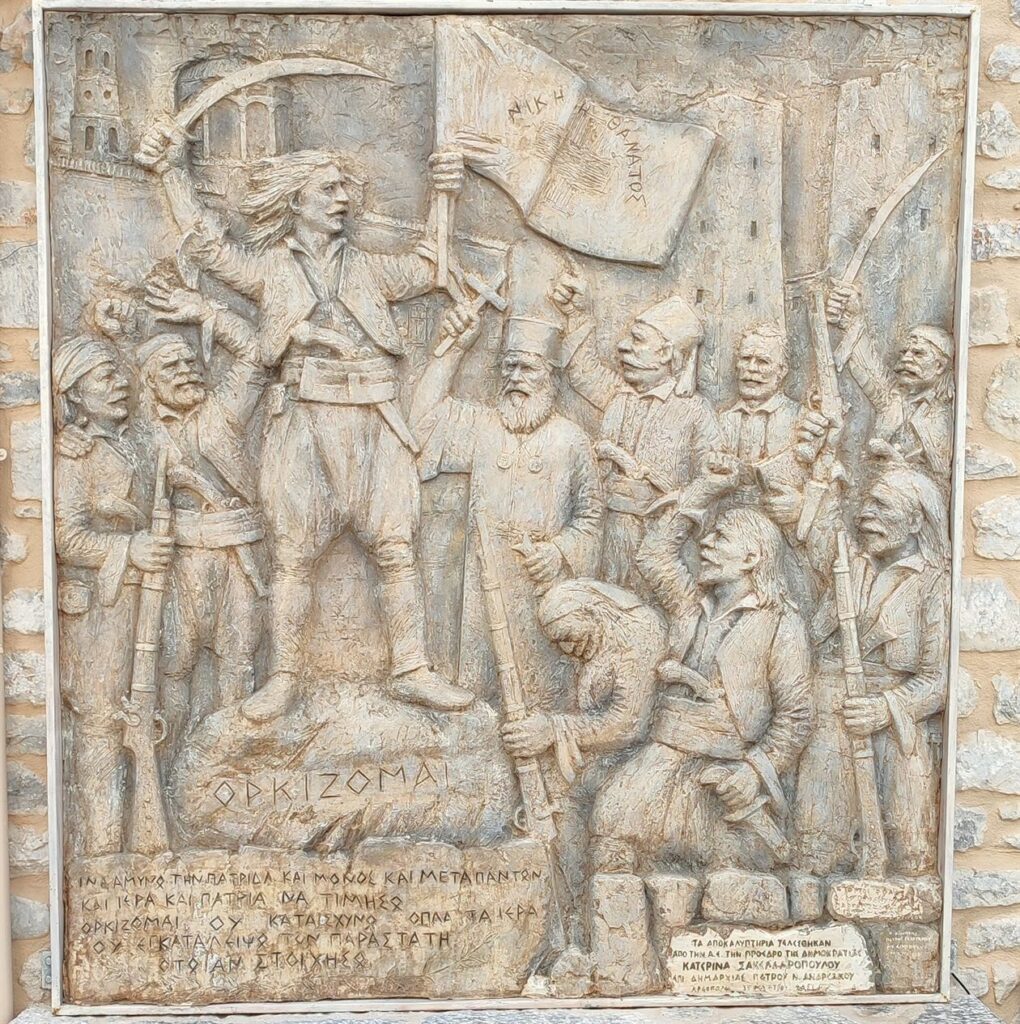Mani’s Role in Greek Independence: A Legacy of Freedom
Summary: The Mani Peninsula played a decisive part in the Greek War of Independence in 1821. Local leaders such as Petros “Petrobey” Mavromichalis rallied Maniot fighters at Areopoli on 17 March 1821 and joined wider forces to liberate Kalamata on 23 March 1821. Mani’s rugged land, stone towers, and tradition of self-governance helped the region resist Ottoman control and fuel the revolution.

Why Mani mattered in 1821
Geography and autonomy. Sheltered by the Taygetos Mountains and open to the Messinian and Laconian Gulfs, Mani kept a strong local identity and a warrior culture. Many villages were organised around fortified tower houses that could be defended quickly.
Leadership. The Mavromichalis family of Areopoli and other clan leaders coordinated fighters across West and East Mani. Their influence helped unite otherwise independent households for a common cause.
Maritime reach. Maniot boats harassed Ottoman supply lines and supported operations along the Peloponnese coast, extending the impact beyond the peninsula.

Key moments
The uprising at Areopoli
On 17 March 1821, Maniot leaders gathered in Areopoli and called their fighters to arms. This date is widely celebrated locally as the start of Mani’s participation in the struggle for Greek independence.
The liberation of Kalamata
Within days, Maniot troops joined Theodoros Kolokotronis and other leaders to take Kalamata on 23 March 1821. The capture of a major Peloponnese port boosted morale and opened a base for further operations.
Ongoing resistance
Throughout 1821 and beyond, Maniot units defended key passes, supported sieges, and maintained pressure along the coast. The peninsula’s social structure and terrain made occupation difficult, allowing Mani to continue supplying fighters and provisions.

Places to visit today
Areopoli, Main Square. Statues and plaques commemorate the 17 March proclamation. The Church of Taxiarches is a focal point for annual celebrations.
Kardamyli, Troupakis-Mourtzinos Tower Complex. A well-preserved fortified settlement that shows how families protected themselves and organised local life.
Cape Tenaro (Tainaron). The southern tip of mainland Greece, linked by tradition to Maniot seafaring and coastal patrols.
Local museums and towers. Many villages preserve small collections and restored towers that tell the story of resistance, clan alliances, and daily life.
Mani’s legacy of freedom
The story of Mani in the Greek War of Independence is one of community strength and strategic geography. Pride in local customs, stone architecture that was built to endure, and a culture of responsibility to kin all shaped a region that was ready to act when 1821 arrived. Visiting Mani today, you can still feel that sense of resolve in the villages, the chapels, and the towers that look toward the sea.

Quick FAQ about Mani and 1821
When did Mani join the uprising
Maniot leaders called for revolt on 17 March 1821 in Areopoli, and fighters moved quickly to support actions around the Peloponnese.
Who were the main figures
Petros “Petrobey” Mavromichalis is the best-known Maniot leader, working with other clan heads and national figures such as Theodoros Kolokotronis.
What is an easy site to include on a history trip
Combine Areopoli with Kardamyli’s tower complex to see both a ceremonial center and an authentic fortified settlement.
Search
Categories
- Accommodation
- Activities
- Architecture
- Areopoli
- Awards
- Beaches
- Community
- Culture
- Destination Highlights
- Discover
- Entertainment
- Food
- Gerolimenas
- Greek Cuisine
- Guide
- Gythio
- History
- Hotels
- Kardamili
- Kardamyli
- Kotronas
- Living in Mani Greece
- Local Business
- Mani
- Marine Life
- Marmari
- Nature
- News
- Off-the-Beaten-Path
- Stoupa
- Sustainability
- Tradition
- Travelling
- Villas
- Wildlife
